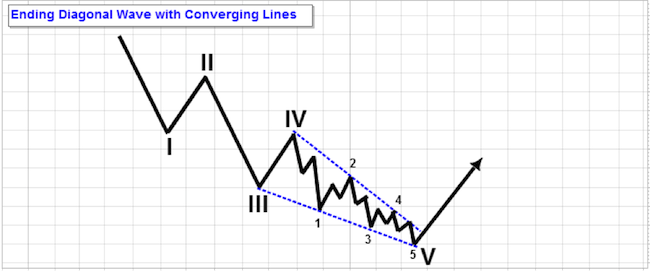تفاوت خط روند با موج چیست؟
به طور کلی روند (trend) جهت سهم را نشان میدهد در حالی که موج (wave) شکل بسط داده شدهی روند یا فاز اصلاح شدهی روند را به صورت گستردهتر نشان میدهد. بسیاری از معاملهگران و سرمایهگذاران روند میکرو (چارت دقیقه تا یک ساعته)، روند روزانه (چارت روزانه) یا سیکلهای بزرگ (روند هفتگی یا ماهانه) را متوجه نمیشوند. بنابراین دانستن تایم فریمها برای یک معاملهگر (تریدر) بسیار حائز اهمیت است.
بنابراین یک معاملهگر روزانه، چندین نقطه ورود و خروج سهام را به طور روزانه دارد، در حالی که یک معاملهگر سویینگ (نوسانگر) ممکن است سهمی را بخرد و برای چند روز یا حتی چند هفته نگهدارد، و سرمایه گذار بلند مدت سهمی را برای چندین ماه تا چندین سال و گاها دهها سال نگهداری میکند.
استراتژی نگهداری سهم
اگر استراتژی شما این است که سهامی را دهها سال نگهداری کنید، بهترین استراتژی این است از شرکتهایی با سابقهی بنیادی قوی و بعد از افت قیمت خریداری کنید و سپس آن را سالها نگه دارید. یا این که هر زمانی از یک شرکتِ به نام، سهمی خریداری کنید و قیمت میانگین آن را به دست آورید و تا زمانی که حرکت نزولی آن شروع شود، سهم را نگه دارید و سپس اقدام به فروش نمایید. البه اساسا فرض بر این است از لحاظ بنیادی (فاندامنتال) منفی نباشد.
از سوی دیگر، معاملهگران روزانه یا سویینگ، سیکلهای بزرگ را در نظر میگیرند و سپس بر اساس آن تایم فریمها واستراتژی خود را تنظیم میکنند. بدیهی است که معاملهگران روزانه، اغلب بر روی سیکل روندهای بزرگتر تمرکز میکنند اما چارت خود را بر اساس تایم فریم دقیقهای یا ساعتی تنظیم میکنند تا آنچه در روند میکرو و موجهای مرتبط با آن روی میدهد را تعیین کنند. معاملهگران موفق سویینگ، نیز دقیقا همین کار را انجام میدهند به جز این که با تایم فریمهای متفاوت، چارت را بررسی میکنند. آنها سیکلهای بزرگ را در نظر میگیرند، سپس روی چارت روزانه تمرکز میکنند تا آنچه را در روزهای آتی و یا حتی هفتههای آینده اتفاق میافتد را بررسی میکنند.
به همین دلیل بسیار مهم است که شما به عنوان معامله گر یا سرمایهگذار، با توجه به تایم فریم، اهداف و استراتژی چگونه عمل میکنید. ممکن است در چارت اشتباهی و با تایم فریم اشتباهی عمل کنید، بدون این که همه موارد ذکر شده را بررسی نمایید و این اصلا خوب نیست.
بنابراین تا زمانی که روند و امواج مرتبط به آن سهم یا بازار را بررسی میکنید و میدانید در سیکل بزرگ سهمی چه اتفاقی روی داده، جلوتر از منحنی حرکت خواهید کرد.
مترجم: هانیه عظیم زادگان
The Difference Between Waves and Trends – Knowing Who You Are
A trend is the overall direction the stock is headed, whereas a wave can be either an expansion of that trend or a
correctional phase within the broader trend. What many traders and investors fail to realize though is you have
micro-trends (minute to hourly charts), you have daily trends (daily charts), and then you have the grand cycle
(weekly and monthly charts). Therefore, to know and understand who you are as an investor or trader is
extremely important when considering the timeframes in question.
Case in point, a day trader is in and out of stocks several times in a day, whereas a swing trader may own or
short a stock for several days to sometimes even several weeks, while the long-term investor could be in the
same stock for several months to several years, and sometimes even decades.
If you’re strategy is to own stocks for decades, then the best strategy is to buy great high quality companies
after they’ve been beaten down, and then hold them forever. Or, simply buy the good quality names whenever
you want, and possibly average into them if and when they end up moving substantially lower – assuming of
course nothing fundamentally negative has actually surfaced.
Successful day traders and swing traders, on the other hand, consider the grand cycle, and then they drill down
into their respective charts depending on their timeframes and strategies. Meaning, day traders often consider
the bigger trend cycles, but then drill down into the minute and hourly charts to determine what’s taking place
within the micro-trend, and the waves associated with it. Successful swing traders do exactly the same thing –
except they consider different chart timeframes. They consider the grand cycle, and then drill down into the daily
charts to determine what’s about to happen over the next several days to several weeks.
This is why it’s so important to know who you are as a trader or investor, because depending on your
timeframes, goals and strategies, you may be looking at the wrong charts at the wrong time. Or, not considering
the chart in question at all. Not good.
Still, even by knowing what’s taking place in the grand cycle of the stock in question, you’ll be well ahead of the
curve – as long as you always consider the bigger waves and trends associated with that idea.
Viking Crest – www.vikingcrest.com

